Last week, the South African paper Mail & Guardian gave platform to known genocide revisionist Judi Rever and a new recruit, unknown to me, one Benedict Moran to ‘reveal’, ‘exclusive’, ‘top-secret’, ‘recently leaked’ testimonies’ allegedly implicating Rwanda’s president in war crimes.
There was nothing ‘exclusive’ or ‘recently leaked’ in the M&G article, but a rehash of Rever’s book which most of us didn’t read, and whose content she has been pushing on social media for months.
In a bizarre e-mail sent to the Rwandan presidency and the Rwandan Patriotic Front, by the rookie genocide denier, Benedict Moran, he engaged in peculiar questionnaire, thrown about to the RPF and the President’s office, asking them to confirm his accusations.
Obviously no one responded, in fact, one commentator remarked that the letter looked like a parody note from the Onion! He reversed the burden of proof, making claims then requesting for evidence. No one responded because, Moran’s ‘recently leaked’ claims are mere revisionist hearsay ginned up by lawyers of genocide perpetrators in the early 2000s which judges of the International Tribunal (ICTR) made a general ruling to squash decades ago.
When the double genocide allegations were first raised over twenty years ago, famous journalist Nick Gordon took a trip to the ‘crime scene’ in Gabiro, where RPA soldiers allegedly burned their Hutu victims. Gordon found, in his own words, “only three primitive army barracks, and nothing remotely resembling a death camp.”
In an upcoming scientific rebuttal of Judy Rever’s book, which I have seen, the author, a renown academic explains how Judy Rever transposes Nazi practices during the holocaust to describe how the RPF may have disposed of bodies.
She remarks that Revers accusations are far-fetched, because such cremation practices took the SS five years and a whole enterprise to set up and still death camps were discovered. It is impossible that the RPF could have killed people and make them vanish in a matter of days or months.
That genocide perpetrators continue to enjoy impunity in South African cities, 25 years after their crimes should be the subject of concern to every normal human being. That they find receptive platforms to justify their deeds, by accusing their victims, or those who defeated them defeat basic human decency. That a journalist or a newspaper chooses to side with them, defeats the object and purpose of the once noble profession.
Just to be clear, I do not debate with genocide revisionists. It is a principle I share with all colleagues, products of Rwanda’s liberation. Across this article I will share previous publications where all these issued were canvassed here and here.
Just like hate media of the genocide era, South African media has a mixed past. During the apartheid, some journalists and papers sided with the apartheid regime, referring to Nelson Mandela and his ANC comrades as ‘Terrorists’, quoting dubious scholars to establish through ‘research’ the superiority of the white race, and misleading the world about what was happening in South Africa.
Alas Apartheid has ended legally in South Africa, but racism hasn’t. The ghosts of hate still inhabit many, as a foreign student there I experienced it first-hand.
While it is illegal to peddle Apartheid-apologists in South Africa, it seems their racist media has found a new outlet: double genocide in Rwanda. Since the accession to power of the Rwandan Patriotic Front by putting an end to the genocide against the Tutsi, South African media has picked sides, not with the heroes or the survivors, but with the killers, publishing everyone who claims to have proof that Rwanda is an open prison.
Last year, when Rwanda Development Board (RDB) signed a deal with English club Arsenal to promote its tourism industry, M&G’s Simon Alison wrote an impassioned fake news, quoting a vastly debunked Human Rights Watch report. Known here as ‘The Walking Dead’ report, published in July 2017, just before Presidential elections in Rwanda, Human Rights Watch lists persons alleged to have been ‘summarily executed by Rwandan security forces’ for petty crimes such as stealing goats, etc.
Seven persons reportedly executed in the HRW report, namely: Nsanzabera Tharcisse, Majyambere Alphonse, Nyirabavakure Daphrose, Karasankima Jovan, Habyalimana Elias, Nzamwitakuze Donati and Hanyurwabake Emmanuel, appeared a few days later in a press conference; It was a MIRACLE!
Others had died of natural causes and their relatives threatened to sue Human Rights Watch for tarnishing their memory. We haven’t heard of HRW ever since, but South African media has taken its place.
Alison’s opinions were obviously ignore by the English side Arsenal, which likely ignores his very existence, and in the same year, Kigali rose to second place in MICE business, almost catching up with Cape Town, and to quote RDB CEO, ‘these people are either ill-informed or ill-intentioned’, either way they are ill.
For many years South African media put pressure on South African Judges to declare the Rwandan government guilty in the death of late Rwandan spy, Patrick Karegeya, strangled in Johannesburg. For seven years they sustained the story in the media, quoting Rwandan terrorists on the run, quoting the wife, the children of the deceased, quoting the lawyers and prosecutor all on the side of the deceased and referring to them as ‘the court’.
Not once did they name their allegations what they are: allegations, until a South African judge, tired of the protracted circus, decided to strike the case from the court’s role.
It is uncanny that allegations of RPF massacres do not mention the Chairman of the RPF, the several Commissioners of the movement and army commanders, who joined from the beginning and along the struggle. Indeed, only racists, with little or no knowledge of Rwandan history, can define the RPF as a Tutsi movement. ‘Umuryango w’Abanyarwanda’ as it is known was led by Tutsi, Hutu and Twa leaders.
In Pedagogy of the Oppressed ’, Paulo Freire speaks of the danger of indoctrination and its alienating effect on peoples, especially in schools, in public opinion (meaning the media). The Brazilian author recommends as a remedy, an educational action aimed at promoting among indoctrinated peoples a clear awareness of their objective situation, that is to say, to equip them to regularly take the measure of the cultural, political and social issues of the contemporary world.
In Freire’s spirit, let me offer a free Rwandan history class, as a remedy alienation, if it is not too late for these people… In 1959, it is not Tutsi who were chased , it is UNAR-ists, members of UNAR: ‘Union National Rwandais’. Unarists were members of a party of nationalists who were fighting for two things: Immediate and unconditional independence of Rwanda; and maintenance of the monarchy. Unarists were Tutsi, Hutu and Twa.
The UNAR was led by Illustrious François Rukeba. A Hutu nationalist who fostered ideals of unity among Rwandans.nAfter he was chased with other Unarist, late Rukeba was stationed in Bujumbura, getting Rwandan refugees enrolled in school as they come. My Tonton, Faustin Kagame, an excellent author in Jeune Afrique, was enrolled in collège by late Rukeba. He also wrote several petitions to the UN Secretary General explaining he plight of the Tutsi. I think it is even wrong to refer to him as a Hutu, I think his real title is Rukeba, an upright Rwandan, and I take this opportunity to salute his memory.
In contrast, there were APROSOMA: Association for the promotion of the masses and MDR-Parmehutu: As both designations indicate, these parties were almost exclusively made of Hutu extremists who were interested in getting rid of the Tutsi and were happy with the continuation of colonialism – as posters below show, they sided with the Belgians to chase the Tutsi. They were led by two anti-Tutsi extremists: Gitera and Kayibanda, propped up by the Belgians.
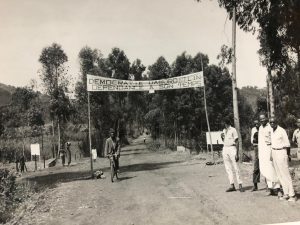

From its inception, the RPF was not a Tutsi but a Rwandan movement made of Tutsi, Hutu and Twa. Only, it was fighting to allow Tutsi, alongside other exiled Rwandans to return home, and two of its ‘Eight-point program’ were and still remain: the Restauration of unity among Rwandans and Eliminating all causes of refugee status.
As the war progressed, the RPF constantly enrolled Hutu soldiers from Habyarimana’s regime. The Rwandan Patriotic Army would capture them, educate them on the ideals of national unity, then enlist them into the liberation movement.
At no point in time, was the RPF exclusively Tutsi. In fact, I have never seen, heard or attended an RPF meeting which had one ethnic group only; no one has, such gathering simply doesn’t exist in Rwanda.
Like it’s ancestor the UNAR, the RPF was also led by a Hutu, late Alexis Kanyarengwe, from the north of the country. I know he is Hutu because he was the highest ranked (Lt. Colonel) of the nine ‘Camarades du 5 juillet’ who assisted late president Juvenal Habyarimana to lead a military coup on the July 5th 1973, against Gregoire Kayibanda.
Kanyarengwe later disagreed with Habyarimana which led to his fleeing to Kenya in December 1980. When the RPF was being created, its leadership approached Colonel Kanyarengwe to become the Chairman of the liberation movement, and one of the first operations of the newly formed Rwandan Patriotic Army was to attack the Ruhengeri prison where Habyarimana locked away his political prisoners and free them all.
Among them were one Major Theoneste Lizinde, Commander Leonidas Biseruka, Muvunanyambo and others. These personalities were immediately integrated in the high command of the RPA. As soon as RPF took power, it further enrolled over 1,000 senior officers of the defeated regime with their ranks and appointed them as commanders of several brigades and other key positions. No movement with genocidal goals does this, and it is inconceivable then, that these soldiers would have conspired to or participated in exterminating their own relatives.
I could go on about the edifying history of the liberation of Rwanda and I will on other occasions, but here I would like to emphasize one point: the RPF-Inkotanyi is by essence ‘Umuryango w’Abanyarwanda’: The Rwandan family – and that’s its strength and the secret of its success.
Any initiative that attempts to stigmatize one or the other group of Rwandans is bound to fail, be it the Mail and Guardian in South Africa, the FDLR in Congo forests, or Jambo ASBL in Belgium, shall all be defeated.



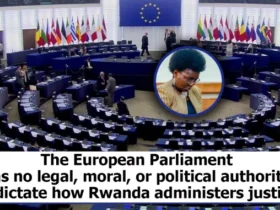

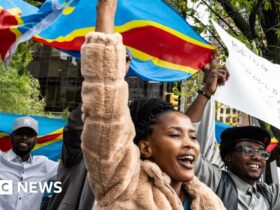
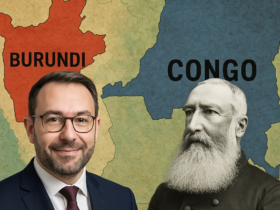



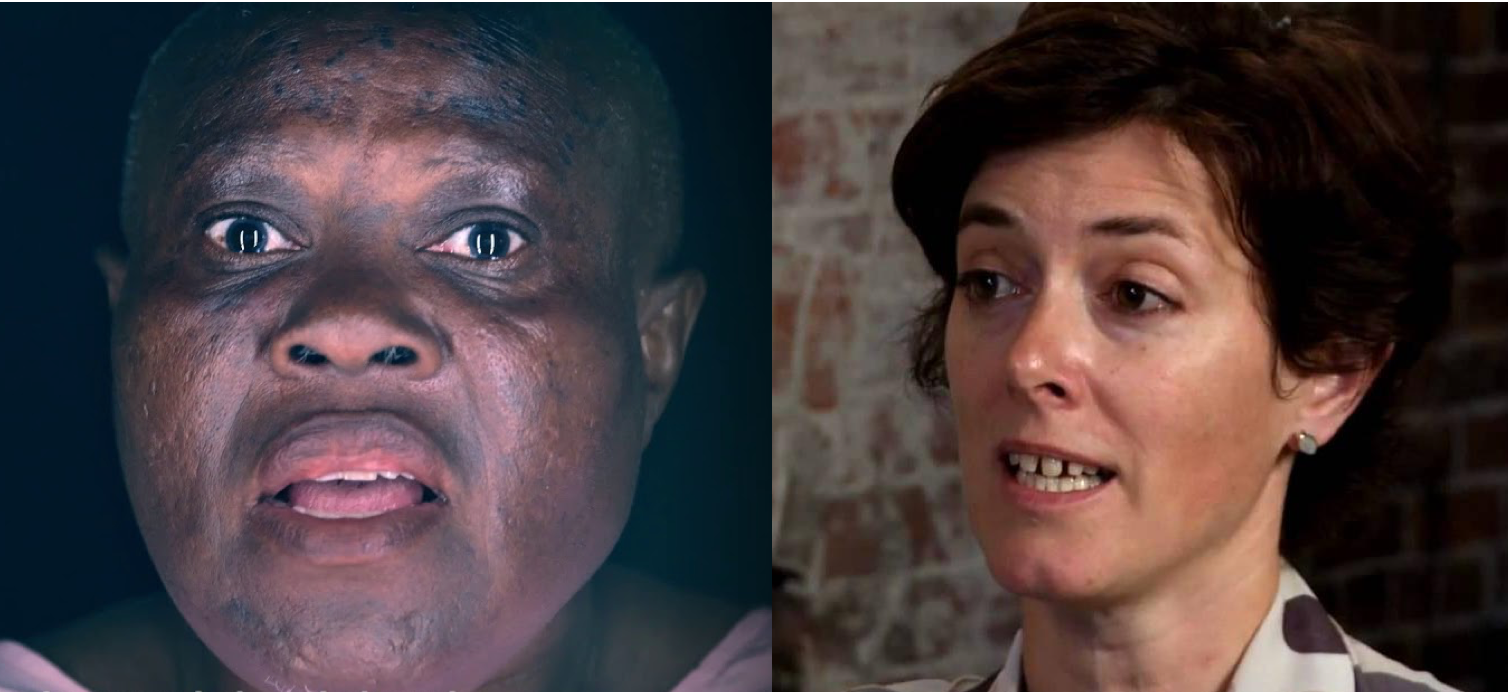
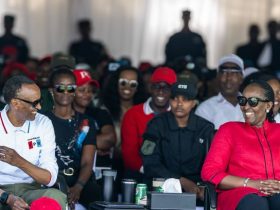


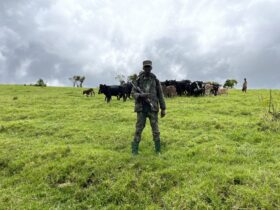
Leave a Reply